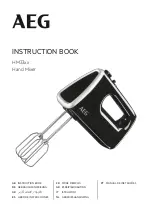
2-2
J-Type CCM
J-Type
Revision J2005-2
D
0DVWHU
#
0XWHV
Four separate switches to globally mute the channels, subgroups, matrix groups and
aux groups. All four switches work independently, so that any combination of master
muting may be selected at any time. The switches are intended for manual operation
only, and their condition will not be recorded with a cue state.
E
5HVHW
Resets the microprocessors within this module (roughly equivalent to turning the
power off then on again). Pressing reset does not clear the internal memories, maps
etc.
F
3&
5
The Sound Automation Manager software allows two computers to be used with the
system, PC1 and PC2. Separate connectors for each computer can be found on the
rear panel of the CCM. When the PC2 switch is pressed, all data to and from the
CCM will go to or come from PC2.
G
5HPRWH
#
VZLWFKHV
These are user configured switches for the remote control of cart machines, tape
recorders etc.
H
368
#
6\VWHP
#4#
DQG
#
368
#
6\VWHP
#5
The J-Type console is designed to be able to use two sets of power supplies simulta-
neously. These eight LEDs continuously show the status of the two sets of ±18V,
+13V and 48V power supply units. See 2.2 CCM Rear Panel connectors
for connec-
tion details.
I
:DUQLQJ
#
/('V
These LEDs illuminate when a system function needs to be brought to the operator’s
attention. This may be an error condition, a “prompt”, or merely useful system infor-
mation. The LEDs are labelled with the titles of each part of the automation system
about which the information is available:
1.
COMMS
Communications with the PC(s), Optical or RS 232 connec-
tions.
2.
MEMORY
Storage space used by the microprocessor to hold items such
as maps and memories
3.
CUES
Recall of console states from the PC.
4.
FADERS
Console faders: channel, master and motorised.
5.
MODULES
Programmable modules.
6.
MIDI
Midi inputs and outputs.
7.
SYSTEM
General category covering miscellaneous operations within the
CCM.
8.
TIME
Any timing activity, such as the current date and time.
J
(QDEOH
#
VZLWFKHV
On/Off switches for MIDI outputs A and B, also for the Events relays. The switches
are momentary and illuminate when the functions are enabled.
K
0,',
#
DQG
#
(9(176
#
/HG
*
V
These show the operation of the MIDI outputs and EVENTS relays. The LEDs will
only illuminate when the appropriate ENABLE switch is “on”. (Note that this is in con-
trast to the original J-Type CCM where the LEDs illuminated continuously).
If an error condition clears or is corrected automatically, then the LED will extinguish.
Otherwise the [Err] button (associated with the keypad) should be seen to flash and
at a convenient moment the operator may press it to obtain more detailed informa-
tion upon the alphanumeric display.
Summary of Contents for J-Type
Page 1: ...Audio Mixing Console 056 6 10 n 95 4 1 07 g8 2...
Page 4: ...iv Table of contents J Type Revision J2005 2...
Page 6: ...vi General Precautions Revision J2005 2 J Type...
Page 8: ...viii Introduction J Type Revision J2005 2...
Page 72: ...3 22 7496 Dual Input Channel J Type Revision J2005 2...
Page 86: ...3 36 7830 Dual input channel J Type Revision J2005 2...
Page 96: ...4 10 7925 Programmable Group Module J Type Revision J2005 2...
Page 102: ...4 16 7972 Programmable Aux Groups Module J Type Revision J2005 2...
Page 110: ...4 24 7548 Programmable Routing Slave Mod Mk II J Type Revision J2005 2...
Page 146: ...6 14 7106 Quad Panning module J Type Revision J2005 2...
Page 154: ...7 8 6910 Oscillator PFL Stereo Aux module J Type Revision J2005 2...
Page 188: ...8 16 7956 DC Master Motor fader J Type Revision J2005 2...
Page 200: ...INDEX 4 J Type Revision J2005 2 W Wiring the switches 1 6 X XLR connections APP I...
















































